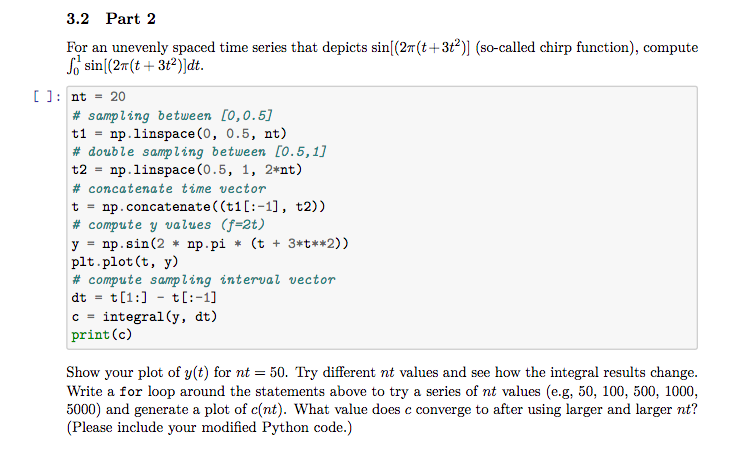Answered step by step
Verified Expert Solution
Question
1 Approved Answer
Answer in Python code. For an unevenly spaced time series that depicts sin[(2(t+3t2)] (so-called chirp function), compute 01sin[(2(t+3t2)]dt nt=20 # sampling between [0,0.5] t1=np. linspace
 Answer in Python code.
Answer in Python code.
Step by Step Solution
There are 3 Steps involved in it
Step: 1

Get Instant Access to Expert-Tailored Solutions
See step-by-step solutions with expert insights and AI powered tools for academic success
Step: 2

Step: 3

Ace Your Homework with AI
Get the answers you need in no time with our AI-driven, step-by-step assistance
Get Started


